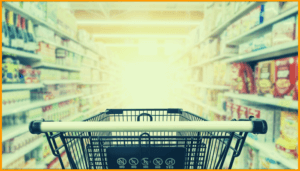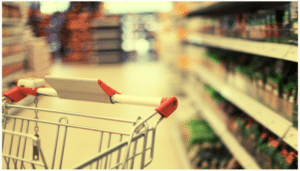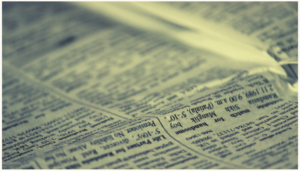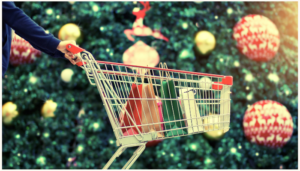Chart a Path to Personalization: Chapter 1
Reading Time: 9 Minutes
For today’s digitally enabled shoppers, “my price” is the best price.
Personalized promotions are drawing intense interest among retailers, but most are still searching for the formula to get them done right – to reinforce shopper loyalty and deliver sales and profits.
Personalization – of assortment, experiences and offers – has emerged as a pervasive theme in the retail community.
During the National Retail Federation Expo, the term was invoked at numerous exhibitors stands and multiple educational sessions.
Widening interest in personalization reflects a convergence of rising shopper expectations and technological innovation across the entire omnichannel shopping world.
Mobile commerce retailers, for example, seek to merchandise large assortments within small-screen apps for best effectiveness. Presenting a personally curated assortment has become a best practice approach, one that begins with identifying the shopper and using algorithms or machine intelligence to predict their interests and present the most compatible items first.
On larger screens, and in retailers’ email marketing to loyalty program members, similar methodologies are employed to present personally relevant item suggestions, based on prior purchases or browsing behaviors. Some call this “the Amazon effect,” but the root causes are broader than one competitor.
“Know Me. Serve Me.”
The pervasiveness of these digital experiences causes shoppers to expect recognition and relevancy from every retailer at every touchpoint – both online and in the physical store. Those expectations extend to the area of promotional prices as well.
In their 2018 “Power of Me” study, Epsilon and Conversant found that nine in ten shoppers find personalization “appealing,” while 29% were motivated to do business with food and drug stores that provide offers or coupons based on their physical location. Another 29% said they were motivated by personalized offers or coupons based on past purchases.
In a 2018 study from Kelton Global, 68% of shoppers said exclusive offers are more important than traditional coupons that are available to everyone.
Food, drug and mass retailers have long history of segmenting shoppers within their loyalty programs and varying offers to those groups based on spending level or other behaviors. In the digital era, however, such traditional Customer Relationship Marketing (CRM) methods fall short, due in large measure to the granularity that online retailers have injected into the shopping experience.
Nail Down Your Promotion Practices
For food, drug and mass retailers, a challenge comes from a promotion status quo badly in need of overhaul. Promotions are vital to retail revenues, accounting for up to 45% of total sales. Yet, an estimated 20 to 50 percent of promotions generate no noticeable lift – or worse, have a negative impact. (Source: BCG)
Also of great concern, fewer than one in three trade promotions break even for the retailer (Nielsen).
Within many retail organizations, various stakeholders may collect and interpret data differently, according to their roles, priorities and objectives. Systems are seldom well-integrated or in many cases, linked at all. Manual planning and analytics processes may depend on individual skills. Over-reliance on prior year benchmarks and promotion design may propagate errors or stifle innovation.
When personalization enters the picture, all of these misalignments can be greatly magnified. Manual shopper segmentation practices and lift analyses are too limited and too slow to support a huge increase in the quantity of offers and analyses needed.
Personalized Pricing is Needed Now
Personalized offers can enhance profitability and loyalty by determining what price points will be motivating to each shopper and optimizing the offers. But retailers also need to avoid the personalization trap” of adding great complexity without corresponding performance gains. That requires a fair degree of automation and machine learning.
As retailers recognize this, they are taking action to improve visibility into their promotion processes. Guesswork or half-measures won’t do. Proven retail science and forecast accuracy are fundamentals needed to seize the personalization opportunity.
Reliable tools and methods are available now to drive measurable increases in:
- Basket size
- Shopping frequency and loyalty
- Revenue
- Profits
Everything is Personal – Why Not Your Promotions?
“Brands that create personalized experiences by integrating advanced digital technologies and proprietary data for customers are seeing revenue increase by 6% to 10% — two to three times faster than those that don’t.” (Boston Consulting Group, Profiting from Personalization, 2017)
Embracing retail science and forecast accuracy can empower retailers’ personalized promotion and loyalty efforts.
At ClearDemand, we believe the path to personalized promotions is marked by 3 foundational activities:
- Master Your Promotions Playbook – adopt practices to support effective promotion outcomes
- Embrace Three Strategic Disciplines – in the areas of resource alignment, science, and measurement
- Put Demand Science to Work – master retail science to personalize promotions
In the posts that follow we examine each of these areas of discipline and share practical insights that reveal how retailers can successfully travel the path to personalization.
The Latest Insights – Straight to Your Inbox
Sign up for the ClearDemand mailing list for actionable strategies, upcoming events, industry trends, and company news.














